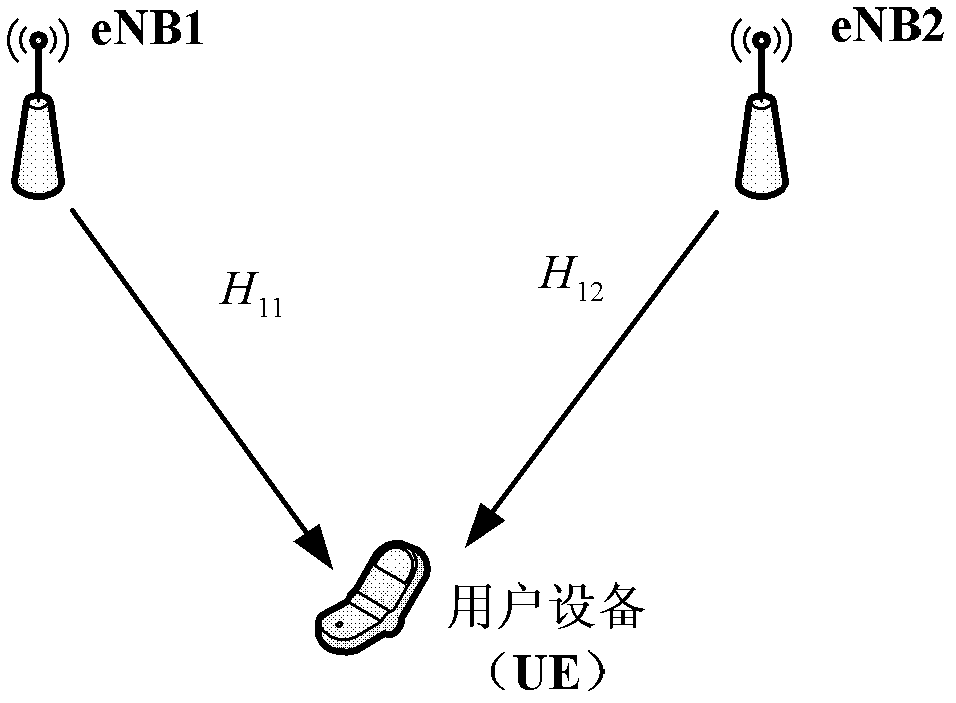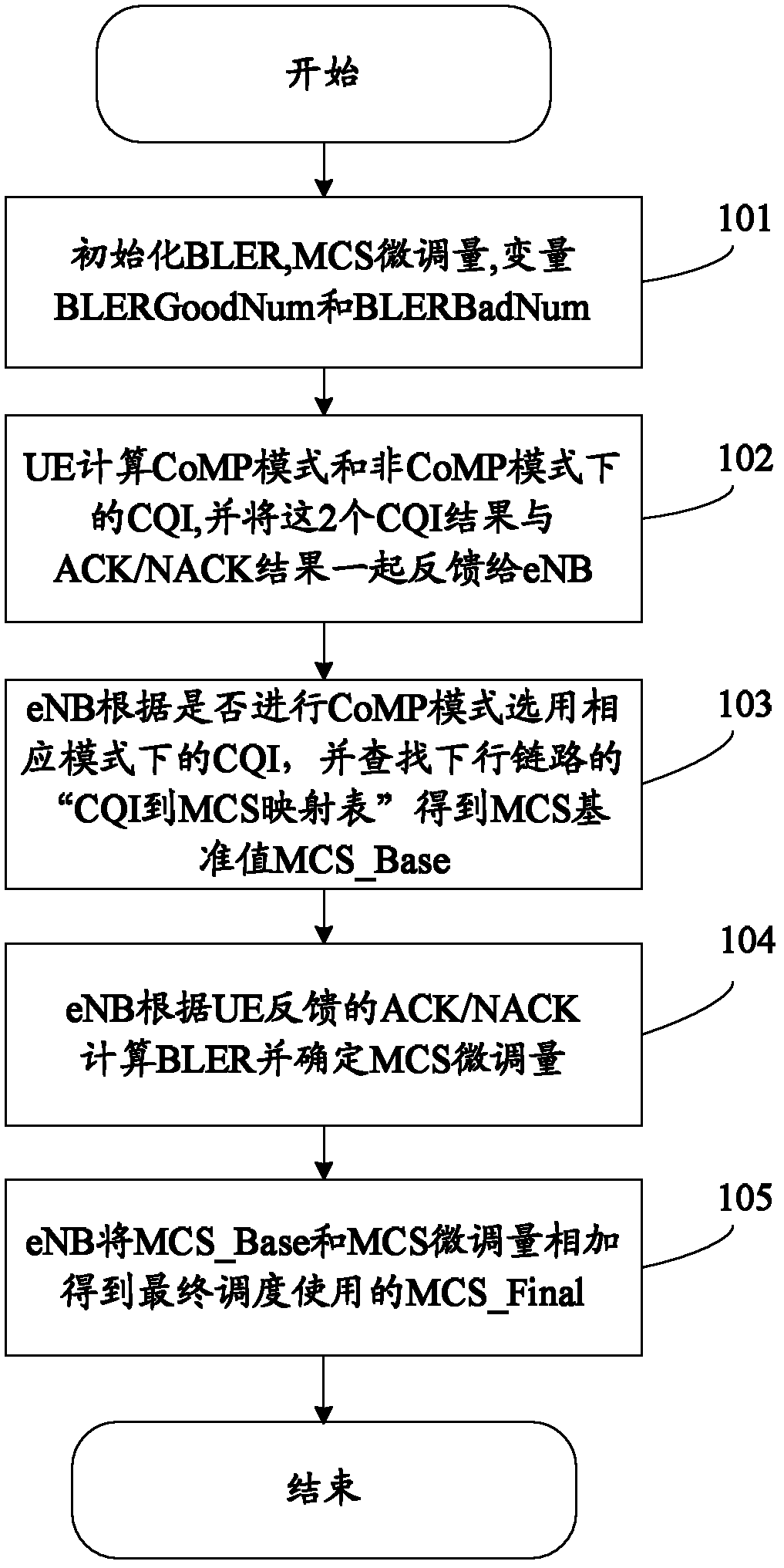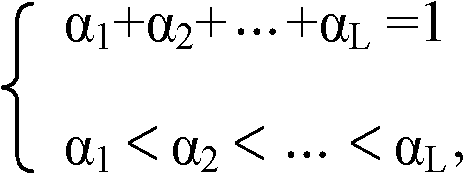Method and system for adaptive adjustment in modulation and coding scheme
A technology of self-adaptive adjustment and adjustment of coding, applied in transmission systems, digital transmission systems, error prevention, etc., can solve problems such as not taking into account
- Summary
- Abstract
- Description
- Claims
- Application Information
AI Technical Summary
Problems solved by technology
Method used
Image
Examples
application example 1
[0117] This example provides a method for MCS adaptive adjustment in the case of two base stations, where eNB1 represents base station 1, eNB2 represents base station 2, and UE1 represents a user terminal; both eNB1 and eNB2 have 4 transmit antennas, UE1 has 2 receive antennas, and eNB1 is a serving cell of UE1, eNB2 is an interfering cell of UE1, H11 is a signal channel, and H12 is an interference channel.
[0118] The specific implementation process of this example is described as follows:
[0119] After UE1 successfully accesses eNB1, eNB1 initializes bit error rate BLER=0, MCS adjustment value ΔMCS=0, counting variables BLERGoodNum=0 and BLERBadNum=0.
[0120] UE1 uses formula 1 to calculate the SINR value in CoMP mode and non-CoMP mode, and then searches the mapping table from SINR to CQI in the downlink, and obtains the CQI value in CoMP mode (indicated by CQI_CoMP) and the CQI value in non-CoMP mode respectively (indicated by CQI_NoCoMP), and feed back the two CQI valu...
application example 2
[0125] This example provides a method for MCS adaptive adjustment in the case of two base stations, where eNB1 represents base station 1, eNB2 represents base station 2, and UE1 represents a user terminal; both eNB1 and eNB2 have 4 transmit antennas, UE1 has 2 receive antennas, and eNB1 is a serving cell of UE1, eNB2 is an interfering cell of UE1, H11 is a signal channel, and H12 is an interference channel.
[0126] The specific implementation process of this example is described as follows:
[0127] After UE1 successfully accesses eNB1, eNB1 initializes bit error rate BLER=0, MCS adjustment value ΔMCS=0, counting variables BLERGoodNum=0 and BLERBadNum=0.
[0128] UE1 uses formula 1 to calculate the SINR value in CoMP mode and non-CoMP mode, and then searches the mapping table from SINR to CQI in the downlink, and obtains the CQI value in CoMP mode (indicated by CQI_CoMP) and the CQI value in non-CoMP mode respectively (indicated by CQI_NoCoMP), and feed back the two CQI valu...
PUM
 Login to View More
Login to View More Abstract
Description
Claims
Application Information
 Login to View More
Login to View More - R&D
- Intellectual Property
- Life Sciences
- Materials
- Tech Scout
- Unparalleled Data Quality
- Higher Quality Content
- 60% Fewer Hallucinations
Browse by: Latest US Patents, China's latest patents, Technical Efficacy Thesaurus, Application Domain, Technology Topic, Popular Technical Reports.
© 2025 PatSnap. All rights reserved.Legal|Privacy policy|Modern Slavery Act Transparency Statement|Sitemap|About US| Contact US: help@patsnap.com



